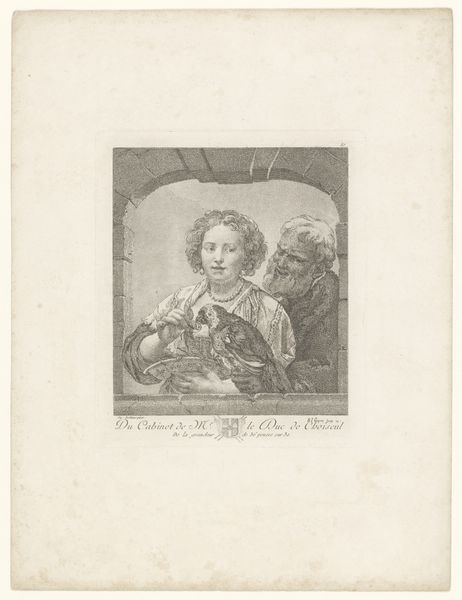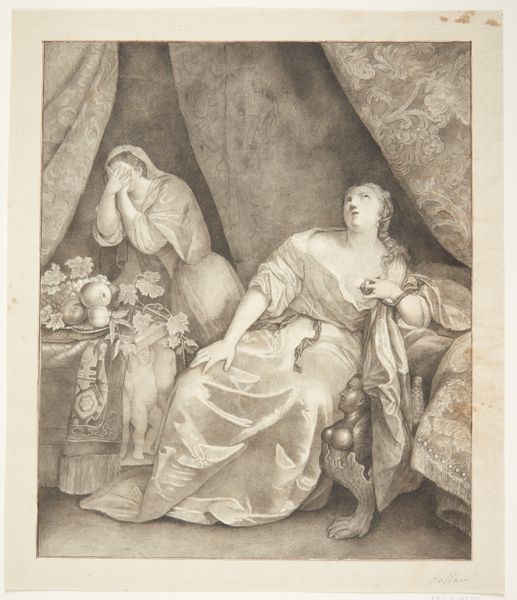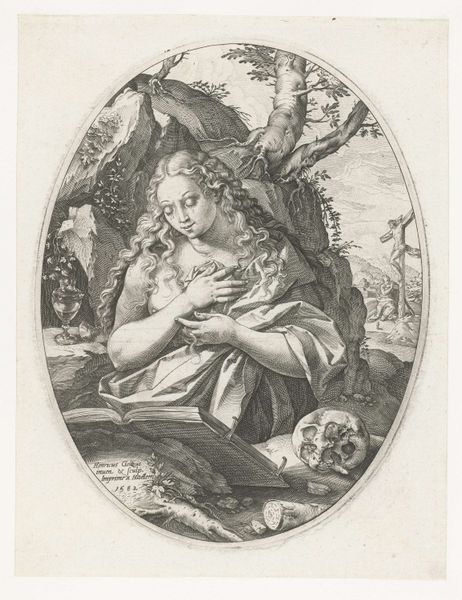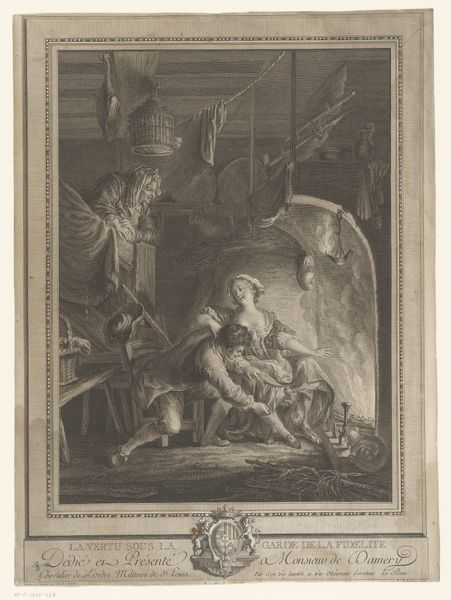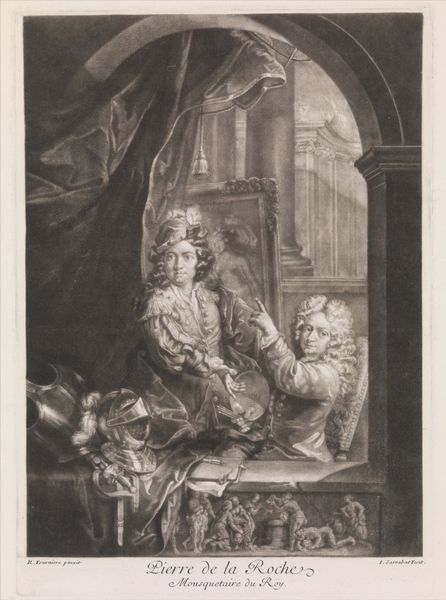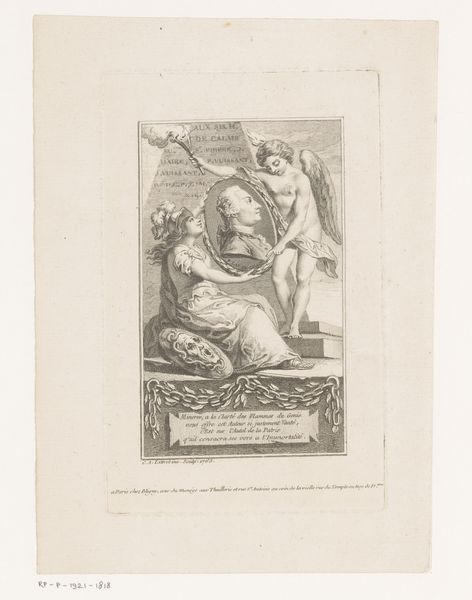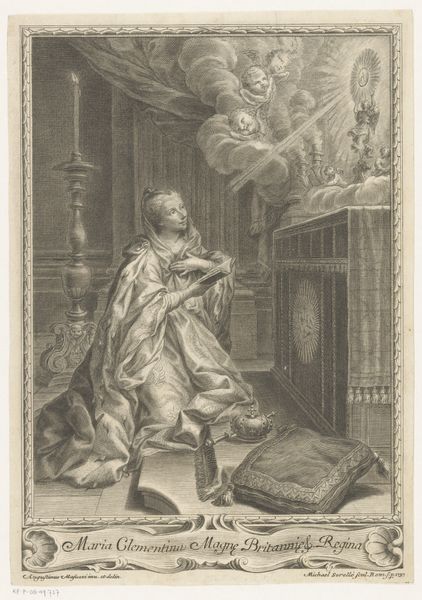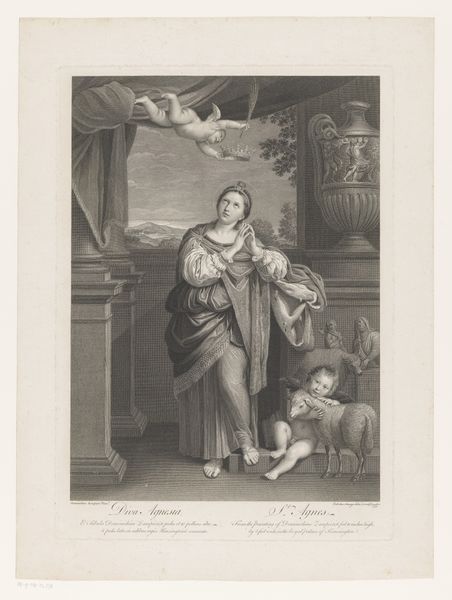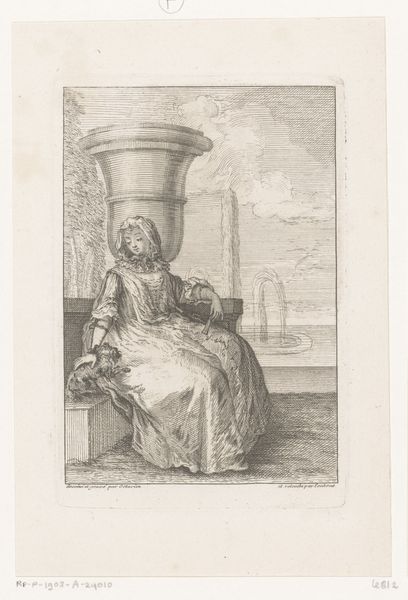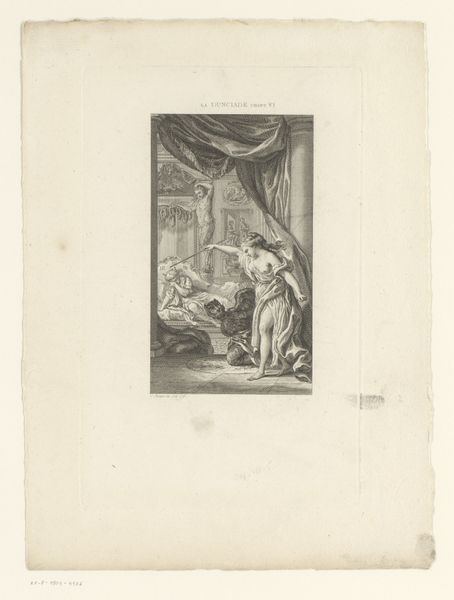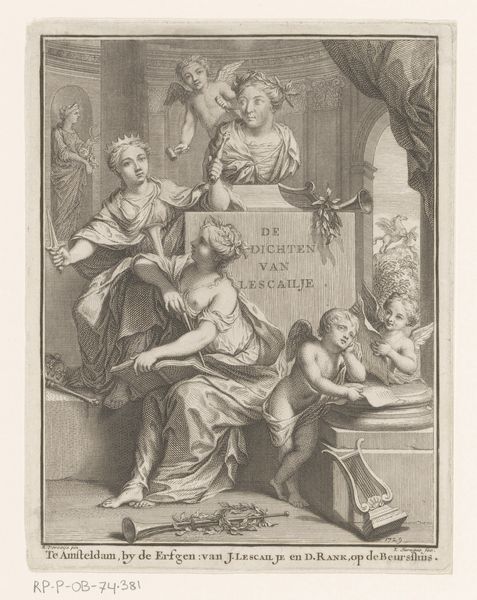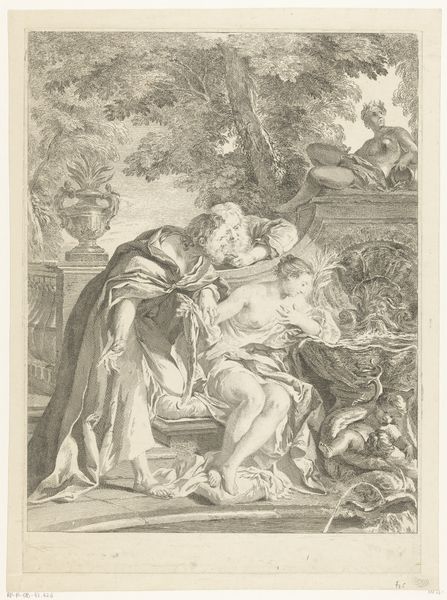
drawing, print, paper, engraving
#
portrait
#
drawing
#
baroque
# print
#
old engraving style
#
figuration
#
paper
#
line
#
genre-painting
#
engraving
#
rococo
Dimensions: height 368 mm, width 251 mm
Copyright: Rijks Museum: Open Domain
Curator: This is "Slapende jonge vrouw voor een venster met naast haar een jongen", or "Sleeping young woman before a window with a boy beside her," an engraving dating roughly between 1745 and 1775, likely by Eustache Danzel. Editor: It’s like stepping into a dream, isn't it? The hazy light, the soft lines...you almost feel the quiet in the room, and perhaps even hear them sleep. It’s incredibly intimate, but at the same time there’s a cool emotional distance. Curator: Considering the material aspects, the Rococo and Baroque periods thrived on print culture, making images widely accessible. The lines here indicate a copper-plate engraving, probably reproduced for a well-to-do merchant family to pin up. Think of the social context: this offers a window into bourgeois domestic life. Editor: "Window" is right! It makes me think about those illicit boudoir scenes and coy romance tropes. This is no Rubens, but you can see they might've been aware. Did the choice to display the boy indicate it was just some hired assistance, versus a lover, per se? Maybe I'm reading too far into it? Curator: The artist’s manipulation of the engraving technique definitely merits our attention; hatching, cross-hatching...laborious work that speaks to skill and, really, time. Consumption of such images was tied to class and leisure, a reflection of how they could spend their free time. Editor: It's funny how the sleeping woman seems both vulnerable and empowered, too. There's a sense of privacy invaded by the production process. Maybe because she’s reclining and vulnerable...yet completely unconcerned about how she’s perceived. Curator: That tension you highlight is powerful precisely because the materials and context of this piece push against such romantic interpretations. Mass production challenges uniqueness; this particular artwork becomes an emblem of social norms reproduced and consumed en masse. Editor: I get that, but the image still holds its power. Thinking about her life beyond the print, imagining the dreams she might be having...It makes me feel melancholy, like catching a fleeting moment. Curator: Exactly—and thanks to the conditions of its making, this image continues to stimulate dialogue about social visibility and individual experience within material culture. Editor: Beautifully put. It leaves us with a sort of echo—a whisper from the past reminding us of the stories we choose to see.
Comments
No comments
Be the first to comment and join the conversation on the ultimate creative platform.
